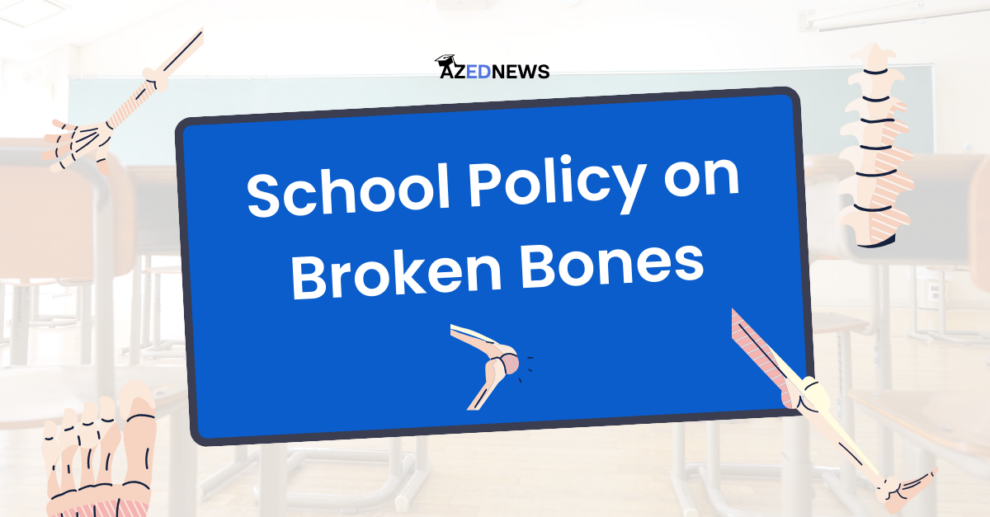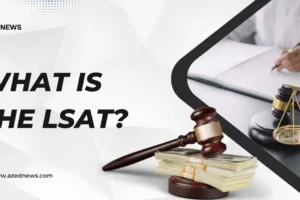School Policy on Broken Bones is an important consideration for parents as they navigate their children’s safety at school. Broken bones are a common injury that most kids face while growing up. It is fairly common among children than in adults. Most parents want their children to avoid getting hurt because of other people’s actions at school.
Table of Contents
Absence from school is a significant factor that affects children’s education. However, there are various reasons behind children skipping school which could range from sickness and vacation to serious injuries. Some schools support students who are dealing with an injury while some encourage their students to take rest at home.
In this blog, we have covered in detail about the broken bones policy in schools.
Importance of first aid in schools:
The time students spend in their school is a very crucial part of their life and it can have a direct impact on their physical and mental well-being. However, in most schools in the United States, health and safety are some of the most neglected parts of policy and practice.
Schools are important for two main reasons related to health and safety. A kid spend a large portion of their formative years in school, so firstly they provide learning chances. They will engage in a variety of activities, such as sports and outdoor workouts. Neglecting health and safety has a direct impact on how common ailments are treated, including first-aid care.
Children are more prone to various kinds of accidents and injuries. It can range from small bumps on the body to serious collisions that leave people bleeding and with fractured bones. Twenty percent of student injuries happen during school hours, with physical activity and other outdoor activities accounting for the majority of these injuries.
First aid is the medical care provided to someone who has been injured or becomes unwell suddenly before professional medical help arrives. First aid’s main objectives are to minimize harm, hasten the healing process, and reduce suffering. It is highly important what you do in the immediate aftermath of an emergency.
It determines the injury’s future trajectory and the likelihood of complications. First aid administered correctly can make the difference between permanent damage, a speedy recovery, and long-term impairment.
The majority of colleges have licensed medical personnel on campus, such as nurses or doctors. Teachers and other school staff are the primary caregivers if a school does not have its own. They serve as the kids’ first line of defense at school. Teachers and other school employees must therefore complete first aid management training.
Benefits of undergoing first aid training in schools:
Equipping everyone with a basic skill of first aid by providing adequate training is essential for the following reasons:
1. It promotes safety:
Basic first aid knowledge makes teachers and students more likely to be vigilant and aware of potential hazards in the environment. Having first aid training increases your sense of security and ensures that you won’t put yourself in danger of mishaps and injuries. It equips you with the skills necessary to handle situations and assess casualties. You will feel more secure in an emergency the more informed you are about illnesses, accidents, and treatments.
2. Reduces recovery time:
Applications of first aid can significantly affect the victim’s prognosis. The distinction between a short-term and long-term handicap may also depend on the response time. Additionally, it may shorten the patient’s stay in the hospital.
The recuperation period can be significantly impacted by even seemingly simple techniques like using an ice pack or caring for a wound. You can reduce the person’s suffering and help them feel better as the first responder.
3. It prevents worsening of the condition:
Temporary medical attention, or first aid, is essential in preventing crises from getting worse. You can maintain control of the situation if you use the appropriate strategies and tactics. You ought to make every effort to assist the victim in managing their wounds or suffering until aid arrives from emergency services.
In the absence of CPR and first aid, the person may experience life-threatening infections and significant blood loss.
4. It increases the feeling of security:
Having received first aid training increases your sense of security. You know how to see the warning signs of a variety of problems and know how to treat them quickly should the need arise. In addition, it will help your loved ones, coworkers, and friends remain composed and at ease in an emergency.
Overview of School Policy on Broken Bones
It is possible to stop additional injuries and the situation from getting worse after an accident by educating everyone, even students, about what to look out for. While the matter is being evaluated, the hurt youngster needs to be kept comfortable and at ease. The silent ones will normally be prioritized if there are several casualties! Prioritize non-life-threatening injuries before focusing on danger, response, airway, and breathing.
Generally speaking, unless there is a very noticeable dislocation or the bone protrudes through the skin, it is impossible to diagnose a shattered bone. To determine whether there is a fracture, an x-ray is required. Nonetheless, the following are potential signs that a child might have a broken bone:
- Pain: The affected area hurts to the touch, to press, to move, or to bear weight on it; however, sprains and strains can also cause discomfort.
- Irregular angle: The limb may have a greater range of motion than usual and be at an irregular angle.
- Serious cuts, bruising, and swelling may be signs of a potential fracture site; however, soft tissue injuries can also present with identical symptoms.
- Deformity and irregularity: the skin may be stretched, lumps, bumps, depressions, or limbs may be shortened.
- Sound: As the injury happens, there may be a snapping or grinding sound, and as the ends of the bone grind against one another, there may be a crepitus sound afterward. If you notice any of the above, you should take the child or children in question to A&E so they can get an x-ray.
Every school in the United States is expected to follow the above rules and procedure in order to provide adequate treatment to students dealing with fractures.
Emergency medical situations in school:
Schools are often advised to immediately contact medical authorities to tend to a student after an injury. However, some adverse situations where external medical intervention is necessary include:
- In the event of an open fracture, where the bone protrudes through the skin, or if the victim begins to exhibit shock symptoms such as nausea and dizziness, or seems faint, an ambulance should be summoned.
- Additional indicators to seek help are respiratory problems, what appears to be unconsciousness, limb loss, unusually chilly extremities, or noticeable skin color changes.
- If you are unable to safely carry the victim to the hospital while maintaining the stability and support of the affected limb, or if you suspect a hip or pelvic fracture, you should also call paramedics.
Absence from school due to fractured bones:
Absence from school has a serious determinantal effect on a student’s long-term learning and progression. Statistically, around 100,000 students take leave from school every year due to serious injury or sickness.
An important percentage of all school absences is predicted to be attributed to trauma, which is one of the main causes of morbidity in children and accounts for an estimated yearly incidence of limb fractures in the age group up to 16 years that require hospital treatment (0.5–1.0%).
In order to cause as little disturbance to a child’s education as possible, schools frequently encourage students to return. It was clear that some kids do not go back to school as early as recommended in spite of this. When asked why their child had been absent from school for an extended period of time, many parents gave the excuse of “school regulations” or the head teacher’s hesitation.
Hence, a lot of schools developed independent rules and regulations that are exclusive to students who are dealing with injuries and sickness. This will ensure that the student is given adequate time to rest along with quality education.
Frequently Asked Questions
1. Can a student go to school with a broken bone?
It should be possible for you to attend school, but your surgeon will give you advice based on your child’s needs. In case your child needs additional attention during this period of immobility, you might want to inform the school about it.
2. Can children go to school with a leg cast?
Children can often return to school or work with a leg cast. However, it is recommended to avoid strenuous activities since they can damage the broken bone or cast and make the injury worse than it already is.
3. For what length of time must you miss school due to a broken arm?
After suffering a fractured arm or wrist, recovery typically takes six to eight weeks. If you have significant damage to your arm or wrist, it can take longer. Wearing your plaster cast is required until the damaged bone heals.
4. Do kids need surgery for broken bones?
Surgery can be necessary for your child to realign some types of broken bones. To hold the broken bone fragments in place, the surgeon may occasionally insert metal rods or pins outside the body or inside the bone. This aids in their proper healing posture.
5. Can my child go to school with a broken wrist?
If your child has a cast or splint in place, they can attend school. After the cast or splint is taken off, they should refrain from engaging in any physical education (PE), sports, or physically demanding activities for an additional three weeks. Additionally, exercise caution when riding scooters and bikes.
Conclusion
It is important to note that several children experience injury or sickness at least once during their school that could potentially restrict them from attended classes regularly. Broken bones is a pretty common injury that many children have. However, it is still quite essential for schools to ensure optimal safety of children during this phase. If a school does not have medical provisions to support a student dealing with broken bones injury, the school might as well permit the student to stay at home at the care of parents or care giver.












Add Comment